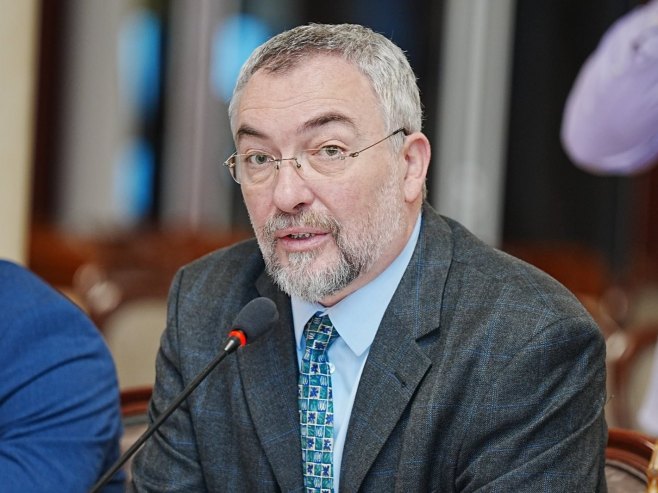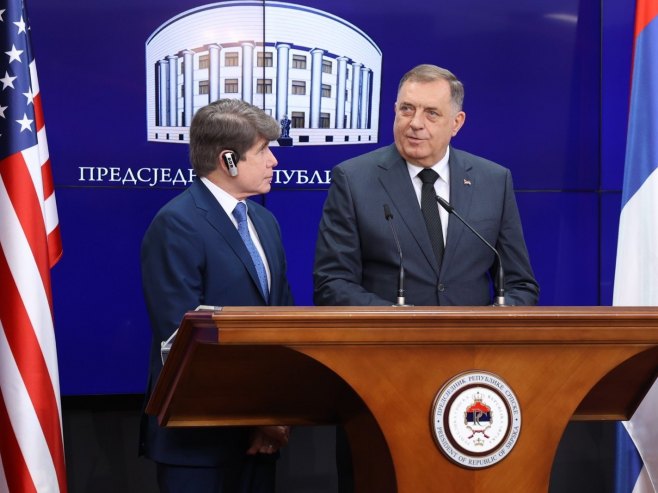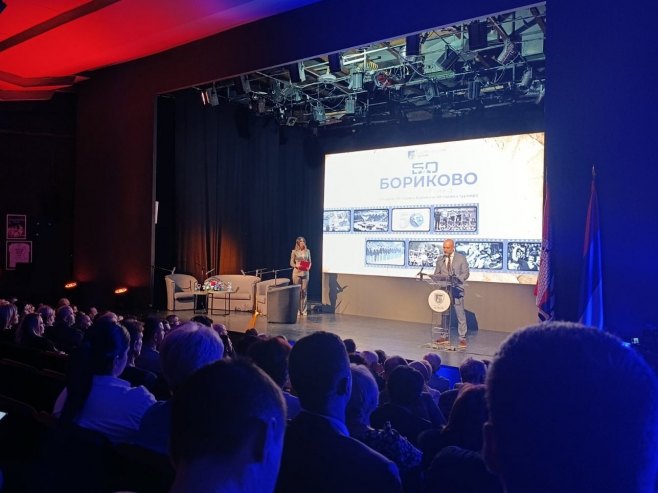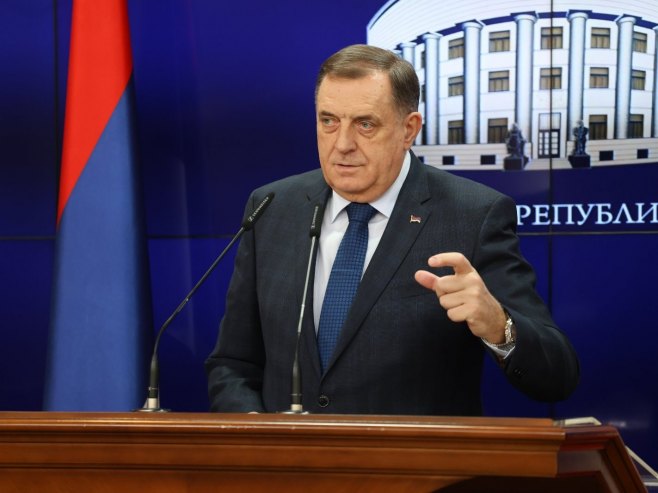The ideas and plans for the final solution of the Serb question, specifically their total annihilation in territories claimed by Croatian radical and clerical structures as their own, have roots dating back to before the 19th century. Genocide against Serbs in the Independent State of Croatia (NDH) began literally from the day this pro-Nazi and clerical creation was formed. However, the wave of expulsion, forced conversion to Catholicism and mass atrocities, which was to lead to the physical destruction and assimilation of around two million (2,000,000) Serbs, over 30% of the population in the NDH, intensified especially after Pavelić’s meeting with Hitler in June 1941.
To finally move away from the Yugoslav-Communist and neo-Croatian paradigms regarding the destruction of Serbs in the NDH, it is necessary to recontextualize and reconsider this phenomenon legally and politically (not just historically). It is essential to generate a new paradigm for understanding and articulating these events based on historically established facts, international law and our cultural identity within the context of long-term processes and the geopolitical and strategic interests of all those behind this crime, whose agendas have remained unchanged to this day. The reduction of the Serbian people to measure acceptable to them is still on the table.
Therefore, we must refer to the UN Convention on the Prevention and Punishment of the Crime of Genocide of 1948 and present its provisions in detail. Article 2 of the Convention states: “In the present Convention, genocide means any of the following acts committed with intent to destroy, in whole or in part, a national, ethnical, racial or religious group, as such: a) killing members of the group; b) causing serious bodily or mental harm to members of the group; c) deliberately inflicting on the group conditions of life calculated to bring about its physical destruction in whole or in part; d) imposing measures intended to prevent births within the group; e) forcibly transferring children of the group to another group.” Additionally, Article 3 of the Convention defines that the following acts shall be punishable: “a) genocide; b) conspiracy to commit genocide; c) direct and public incitement to commit genocide; d) attempt to commit genocide; e) complicity in genocide.”
Article 4 stipulates that “persons committing genocide or any of the other acts enumerated in Article 3 shall be punished, whether they are constitutionally responsible rulers, public officials or private individuals.” In the following examples, it will become clear from certain cases, which possess systemic characteristics, that genocidal intent or premeditation for committing genocide, in the sense of Article 2 of the Convention, existed. Therefore, these are not isolated incidents or radical ideas that could have been interpreted as individual cases in the form of radical proposals, but a systemic approach through public appearances, specific actions, the organization of political and repressive mechanisms and direct actions of NDH officials. Besides, it is evident that systemic and mass crimes, as well as other actions, aimed at destroying around two million Serbs in the NDH are defined as genocide according to Article 3 of the Convention.
Soon after assuming power in the NDH, its top officials publicly declared their intentions to establish a pure Croatian political nation and that there was no place for others in the newly founded Croatian state. The Croatian political nation consists of Croats of Catholic, Islamic, and Protestant faiths, and all others must disappear “in an easy or the hard way.” There are numerous examples where top NDH officials, including the Poglavnik, together with the Catholic Church, closest collaborators of Ante Pavelić, proclaimed and explained the goals of the new Croatian state. Upon his arrival in Zagreb, Pavelić triumphantly declared, “I have cut down the tree [alluding to the assassination of King Alexander in Marseille in 1934], and you should cut the branches [the Serbian people].”
Consequently, ideas about the extermination of Serbs and their physical elimination in the NDH were proclaimed. Mile Budak publicly highlighted genocidal intentions from the very beginning. Although the new state was just being established, and the Ustasha regime was still forming, its genocidal goals were not hidden, “Thus, the Croatian minister Mile Budak, as early as the end of April 1941, said: ‘We will kill one part of the Serbs, resettle another part and convert the rest to Catholicism and thus assimilate them into Croats.’” This statement can directly be categorized under Article 2 of the Convention, which defines what constitutes genocide, as well as Article 3, which defines punishable acts in the sense of genocide.
Furthermore, Minister Milovan Žanić, who was the chairman of the “Legislative Commission of the Croatian State Government” in the NDH, stated on May 2, 1941: “I speak openly, this state, this our homeland, must be Croatian and none other… This land must be the land of Croats, and there are no methods that we, as Ustasha, will not use to make this land Croatian and cleanse it of Serbs.” Here, genocidal intentions are also noticeable, first in terms of creating a purely Croatian state – the elimination of all other ethnic groups – and second, openly admitting that all possible methods, including extermination, are feasible.
In his speech in Donji Miholjac on July 27, 1941, NDH Foreign Minister Mladen Lorković directly explained why it was necessary to cleanse Croatia of Serbs through killing and expulsion. He said: “The Ustasha movement insists on an energetic solution to the Serbian problem in Croatia. Those on the other side of the Sava and Drina rivers shout that we are intolerant, that we treat Serbs inhumanely. We answer to all that it is the duty of the Croatian government to act so that Croatia belongs only to Croats. It is our duty to forever silence those elements that contributed the most to Croatia falling under Serbian rule in 1918. In short, we must exterminate the Serbs in Croatia! That is our duty, and we will do it. We will go to the end, regardless of what those across the Sava and Drina say in the name of humanity. The Croatian government, under the leadership of our wonderful Poglavnik, has taken into its capable hands the solution of this problem and will solve it thoroughly.” Lorković directly and unambiguously publicly emphasizes that “Serbs must be exterminated in Croatia,” confirming that the question of exterminating Serbs in the NDH was actually a systemic issue, proclaimed, defined and presented as a public policy.
Additionally, Viktor Žanić, a minister in the NDH government, stated on May 2, 1941: “There is no method that we, Ustasha, will not use to make this land truly Croatian and cleanse it of Serbs, who have endangered us for hundreds of years and who will want to endanger us again at the first opportunity.”
The NDH’s commander in Banja Luka, Viktor Gutić, also publicly spoke in this sense: “Destroy them wherever you meet them, and the blessings of both the Poglavnik and me are assured!” In his speech in Sanski Most on May 29, 1941, among other things, he said: “…there will be no more Serbs. I have issued drastic orders for their complete destruction, and new orders are coming for their total extermination.” This is another public proof, especially given the existence of the mentioned orders and blessings, that state policy had direct and undisguised genocidal intentions. Besides, this statement also shows the existence of operational (concrete) actions indicating the execution of crimes. Gutić declared in Prnjavor on July 9, 1941: “Kill the Serbs wherever you find them… Destroy Serbian churches and their homes…” From this, it is evident that the intention was not only physical extermination but also the destruction of the historical legacy of the Serbian people – to erase Serbs and everything Serbian from the face of the earth.
Among all the mentioned statements, the most significant seems to be Mile Budak’s, which we have already quoted: “We will kill one part of the Serbs, resettle another and convert the rest to Catholicism and thus assimilate them into Croats.”
In this statement, almost all the elements listed in Article 2 of the UN Convention on the Prevention and Punishment of the Crime of Genocide can be seen, namely: a) killing members of the group; b) causing serious bodily or mental harm to members of the group; e) forcibly transferring children of the group to another group. According to the Convention, these acts are considered genocide.
The scope of this text does not allow us to mention even the largest execution sites or camps, examples of violent expulsions and assimilation, but this is not necessary as there is no Serb from the area of today’s Croatia or Bosnia and Herzegovina who did not have someone killed, forcibly expelled or assimilated during the genocide against Serbs in the NDH. We all have our personal stories, including the Serbs from Prebilovci and Herzegovina! The question is whether we are living the memory of the existence of our ancestors and their desires, hopes, and dreams.
In his book “Axis Rule in Occupied Europe” from 1944, Raphael Lemkin, who many consider the father of the definition of genocide, in addition to the genocide against Jews, also addresses the case of the destruction of about two million (2,000,000) Serbs in the NDH and concludes that it is undoubtedly a case of genocide.
The most authoritative historian of the Holocaust in Yugoslavia in Israel and Yad Vashem, Menahem Shelach, a Croatian Jew – as he refers to himself – provides a lot of information about the suffering of Serbs in the NDH, both regarding physical extermination and the expulsion of the Serbian population. He directly states what kind of crime it is and says: “The government of the Ustasha Independent State of Croatia unequivocally initiated, encouraged, organized, implemented and carried out a policy of genocide against the Serbian population of Croatia. It did so through complete physical destruction, mass expulsions, forced conversions and the deliberate establishment of illegal (racial) legislation, imprisonment, causing physical and spiritual harm.”
For all Serbs who remember any of these sufferings today, it is necessary to understand the broader context but also the Serbian perspective and paradigm. Of the two million Serbs designated for total destruction within the NDH through the three methods mentioned previously, according to contemporary knowledge, that is, rough estimates using a conservative approach, between 1.1-1.3 million Serbs were encompassed by genocidal actions. In short, according to the UN Convention on the Prevention and Punishment of the Crime of Genocide, all killed, forcibly expelled and assimilated (converted to Catholicism) Serbs are victims of genocide, making up an estimated number of 1.1-1.3 million victims. After 80 years of this genocide, a little over one million Serbs live in the areas of the former NDH!
The Republic of Srpska was established due to this experience of genocide and the resurgence of such ideas and plans!
This text is based on the author’s master’s thesis.
Author: Dušan Pavlović
Source: CDPIRS









